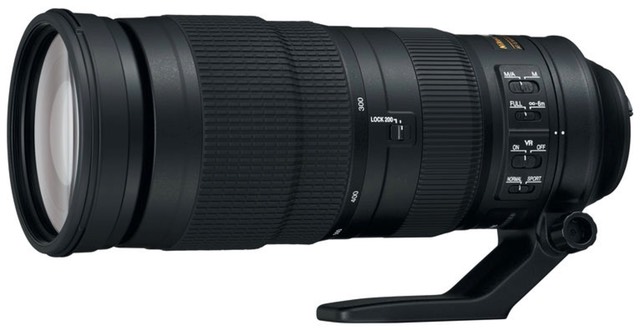
What is It?
The 200-500mm f/5.6E AF-S ED VR lens was a surprise announcement from Nikon. First, it was a surprise that Nikon would do another telephoto zoom so close to the 80-400mm/200-400mm lenses, but more importantly, at US$1400 this new lens looked like a bargain compared to virtually any other telephoto lens Nikon made recently. The 80-400mm is US$2300, the 300mm f/4E is US$2000, even the 70-200mm f/4 is US$1400, and let’s not talk about the prices of the “exotics." That a new lens with so much glass in it can match the 70-200mm price seemed a bit out of character for Nikon. And they even threw in a tripod collar, too ;~).
Indeed, the price has thrown a lot of people for a loop. Since the introduction I’ve been getting regular emails from people who are waiting for one of their trusted review sources to render a verdict on this lens before they buy it. Heck, my workshop teaching assistant even rented one for the Galapagos workshop rather than just buying it. Coupled with Nikon’s recent record of QC issues, it seems that the price versus specs disparity really provoked a “wait and verify” reaction out of quite a few potential purchasers. So much so that the lens has actually been in stock everywhere after the initial shipment, and during the biggest shopping season of the year and despite a quick halt in shipments to correct a firmware issue.
Let’s get to the details about this lens for a moment. This is not a simple or small lens. While the maximum aperture is f/5.6, the 200-500mm range makes it a five pound (2300g) beast that will take up a solid 4.5 x 11” (~120 x 280mm) in your bag. With the lens hood on and zoomed out to 500mm, the lens rockets up to almost 17” in length. While technically you can handhold this lens, please read carefully my comments below about that, particularly in the handling section. You do not casually decide to go around carrying this lens. Coupled with a competent body, we’re talking something near seven pounds, so you’ll need a really good carrying system lest the weight quickly fatigue you. While I may have seemed casual about carrying it sometimes by the handle in the Galapagos, I actually had a safety strap on it at all times, and I’m glad I did.
Another thing about the price that’s a bit startling is that Nikon included a number of things on this lens you might not be expecting. First, it’s an E-type lens, meaning that aperture control is electronic, not mechanical. Apertures go from f/5.6 to f/32. We’ve got four switches on the side of the lens (focus mode, focus limiting, VR on/off, and VR type). VR is the latest and greatest with a stated 4.5 stop capability (CIPA rating). We get a zoom lock lever to prevent lens creep while carrying. A full rotating and removable tripod mount is included in the price (it wasn’t included with the 70-200mm f/4 at the same price ;~).
Inside we have 19 elements in 12 groups, not exactly a price-sensitive design point when the front element alone is big enough to make the lens require 95mm filters. ED glass is used in three of the elements, and the lens is internally focusing (though it extends during zoom, fortunately without turning the front element). A 9-blade aperture diaphragm is used. You can mount a TC-14E on the 200-500mm and still have autofocus on most recent Nikon bodies (though it might be constrained to one or a few focus sensors). While you can mount the TC-17E or TC-20E converters on the lens, you won’t get reliable autofocus, if any autofocus at all.
In some ways, it’s more illustrative to consider what is missing from the 200-500mm: no Nano coating, no drop-in filters, and no stated weather-sealing. The lens hood is a simple, large, one-piece plastic part that bayonets onto the lens.
The lens is marked at 100mm intervals: 200, 300, 400, 500mm, and the zoom ring is very wide and towards the front of the lens. The focus ring is closer to the camera body, the opposite of most Nikkor telephoto designs. Minimum focus is 7.2’ (2.2m), which at 500mm gives something a bit less than 5:1 magnification, a reasonable close focus capability though not approaching macro.
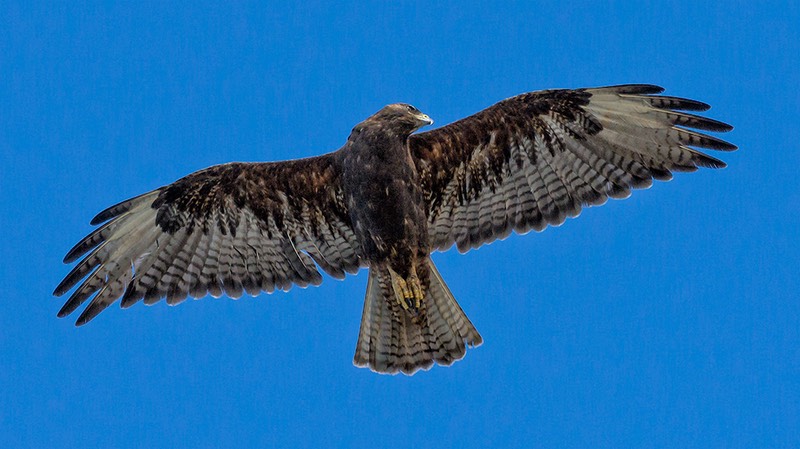
When Nikon announced this lens, there was a lot of additional disbelief centered on performance. First, the theoretical MTF charts Nikon published for the lens looked excellent, indeed incredible for DX body users and still excellent for FX users. Likewise, there was a strongly-held belief that Nikon had to have cut corners somewhere to make that price, and it would show up in images.
The corners I can see cut are (some already mentioned before): no Nano coating, no weatherproofing, no drop-in filter tray, no mechanical linkages for older bodies (particularly film bodies), no lens strap attachment point, more use of plastics, and something that seems to go unnoticed: a simpler internal design that results in a zoom ring that has to be turned quite a distance, and a focus ring that is close to the body (as are the lens elements used in focusing, thus the simplicity of the cam involved). While there’s a lot of glass in the lens (19 elements), most of the glass is actually quite small in diameter. Only the front three elements are near the size of the barrel. This is a “simple but complex” lens design ;~).
However Nikon achieved it, for once Nikon isn’t in the stratosphere on pricing compared to competitive lenses. The Tamron 150-600mm f/5-6.3 is US$1060, the similar Sigma Sport is US$2000 (the more consumer “Contemporary” version of the lens is US$1080). Say what? Nikon in the middle of the pricing for a change? That’s new. Nikon is almost always the high-priced choice for similar lenses. I’ll have more to say about how the 200-500mm fares against that competition in the final section of this review.
Nikon’s page for the lens is here. The lens is made in China, and you get the HB-71 lens hood and a soft LC-1434 case with the lens. Price is US$1400.
Source of the review sample: personal purchase. Results compared to two other sample lenses available to me.
Note: the 200-500mm was subject to a recall to correct a firmware issue that prevented autofocus from continuing to work when you rotated the zoom ring while partially pressing the camera’s shutter release (or AF On button). Nikon didn’t call this a Service Advisory, so you have to search for it in the Knowledgebase articles (see here). This problem only affected the first shipment of lenses into the US. All lenses produced in November 2015 or later have the firmware update already updated.
How’s it Handle?
Probably the big liability of this lens comes in this category: handling. Simply put, you can’t zoom the lens reliably in one action while handholding. Moving from 200mm to 500mm is a large nearly half turn (160°) of the very wide zoom ring, and pretty much will force you to take your hand out of optimal shooting position to make that much of a change all at once. Indeed, you can barely get from 200mm to 300mm without having to change your hand position from shooting ready.
Some folk won’t find this a liability at all. If you’re mostly shooting subjects at distance, you’re likely at the 500mm end, and you can get back out to almost 300mm without having to do the hand two-step. But in the Galapagos Islands, I was in plenty of situations where I needed 200mm, then I needed 500mm, and then I needed something in between, repeat ad infinitum. In this situation, I was doing the two-step a lot, and it can cause you to miss an image or two while you’re doing it.
If you’re on a tripod, the situation is better, but going from 200 to 500mm is still a very long turn of the ring, and if you don’t grab the ring just right you’ll be doing the two-step, too.
I suspect the long zoom rotation is due to cost cuts in the design. Rather than use more complex ratcheting cams and more complex internal element movements, I suspect Nikon used a very simple ramp and only two groups that actually move via the cam (the front group moves with the lens extension, for example). The lens gains over three inches in length when zooming (with no front element rotation), which requires a fairly big ramping cam in order not to feel too stiff.
My other slight frustration with the handling was that the focus ring is nearer the camera body than the zoom ring, the opposite of the telephoto lenses I generally use, and not in an optimal place for someone who manually tweaks focus a lot, as it’s behind the center of gravity point.
On the flip side, both rings on my sample are smooth and consistent in their rotation action (some lenses get “stickier” as you near focal or focus range limits).
One thing I appreciated was that Nikon didn’t totally skimp on the tripod collar for a change. While this new collar is still not perfect, it is probably the stiffest of the tripod collars Nikon has produced in quite some time on the non-exotic lenses. When locked down properly I’m not seeing any terrible flex in it. That said, this “grab the back of the lens with a ring” type of tripod collar is never perfectly stiff, partly because there’s so much mass in front of it. While the 200-500mm’s implementation is the best I’ve seen in decades from Nikon, I can still get a little vibration out of it when shooting on a stable platform. If you’re looking for a completely stable system, you might try the Really Right Stuff Long Lens Support or Kirk’s custom solution for the 200-500mm. The “handle” portion of the tripod collar is a little short to use as a secure carry handle, too. That doesn’t bother me as I typically carry such lenses via a Blackrapid strap.
While some have complained about the lens hood, personally I don’t have any real problems with it. Yes, it’s a little difficult to get the really wide ring aligned right sometimes as you’re trying to put it on, but I didn’t find that my hood was popping off as others have reported. Indeed, that was true both for rough transport with the hood reversed as well as a lot of rough carrying over tough terrain, including bumping against lava rocks a few times. Thankfully, the lens hood design is a one piece, not the really el cheapo multi-piece design Nikon has used on some lower priced lenses (e.g. 55-300mm).
The four switches on my sample are very stiff. So stiff that I have to really want to change the setting; they’re simply not going to move by casual contact. Likewise, I didn’t really need to use the zoom creep lock, though it’s nice that the lens has one.
The big handling issue is going to be weight, though. At least if you’re trying to hand hold. This is about as big and heavy a lens as I’d want to try that with, and it can be fatiguing very rapidly.
How’s it Perform?
Autofocus: I was prepared for just about anything here, as I’ve heard a lot of conflicting assessments about this lens. After using it for many hours daily over two weeks, I think I have a pretty good handle on it. Short answer: it doesn’t perform like the exotic Nikkors, but nor is it a slouch.
Indeed, I’d say the 200-500mm f/5.6 initially focuses far faster than any of the f/1.8 primes Nikon has been making, all else equal. While that first focus isn’t quite what I’d call super snappy, it also isn’t in any way problematic. I had no problem getting initial focus on fast flying birds coming directly or diagonally at me, and getting it when I needed it. Where I saw some issues was in situations where I lost focus and the lens had to re-establish it on quick moving subjects. Sometimes I’d get several in-focus photos, a couple out-of-focus, and then another string of in-focus shots.
Part of this is not the focus system at all. I was shooting the 200-500mm mostly hand held, and it’s a big, heavy lens to be doing a lot of maneuvering with. Sometimes I’d be trying to pan with a subject and droop a little, letting my focus sensor pull off the subject somewhat. In those instances, what I observed is this: once the lens (and camera) moves focus off the subject, getting it back isn’t instant. While this is fully under the camera’s control, the focus motor speed on the 200-500mm was causing me to miss reacquisition by the next shot in a burst sequence (at 6 fps). I’ve not found that to be true of the 80-400mm in the same circumstance on the same body. Put another way, if I were shooting the same 12-shot fast motion sequence handheld with both lenses, the 200-500mm will get a few less “in focus” shots than the 80-400mm, partly due to the weight causing me to move the focus sensor off the subject, partly due to the 200-500mm not reacquiring focus quite as fast as the 80-400mm (or the 200-400m f/4 in the same situation for that matter).
This is a real thing, but not a terribly bad thing. When I could keep my subject perfectly held on the focus sensor, the 200-500mm had no problems at all keeping up with some pretty fast and often swerving subjects. Were I on a gimbal mount on a tripod, I’m not sure I would have noticed this focus difference. But frankly, what are we expecting out of a five-pound lens? That’s a lot of weight to keep steady out in front of you handheld, proper shooting technique or not.
So let’s look at focus in practice. This pelican started stationary to my left, took off and semi-circled me. My stationary shot was at 500mm, this shot in front of me is at 380mm. So I was panning, zooming, and following focus simultaneously:

Not only was I able to hold focus through all this, but examining the full sequence of 18 shots, the lens was pretty dead on throughout, even though I was struggling to unwind my body, zoom, and keep the lens aimed right simultaneously.
(Wait, what did he just say? Unwind? Yes. I anticipated that the pelican was going to take off on my left and move somewhere in front of me. Thus, the first shot I have of him, I’m actually swiveled at my hips to face him. As he took off and moved in front of me, I “unwound” my body swivel, releasing the tension. Most people do this backwards. They start facing a subject that’s going to clearly move across their path, and the “wind up” more tension as they try to follow the subject. Doing that would make a lens this big and bulky even tougher to handle. Figure out where a subject is going, orient yourself that direction, then swivel to point at the subject. This way you unwind and release the tension as you pan.)
With the TC-14EIII, the focus performance is considerably slower and easily seen as slower. Accuracy still seems excellent, but tracking is only fair and initial focus speed is not good enough for fast moving subjects.
Overall I’d characterize the 200-500mm as being quite good in focus performance, but watch your handling, as you can compromise that performance quite a bit, and avoid TCs.
Sharpness: The Nikon MTF charts suggest that the 200-500mm should be an excellent performer wide open, and yes, it seems that it is. From what I can see, the lens gets a little better at f/8 than f/5.6, but not a lot. I wouldn’t be afraid to use it wide open. By f/11 diffraction starts to be an issue on a lot of the bodies you’d use this lens on, so I’m not going to try to assess the smaller apertures. Set f/8 if you can, but don’t be afraid of f/5.6.
From the little that I’ve used the Tamron (200-500mm, 150-600mm) and Sigma (150-600mm) lenses, I’d say that the Nikkor is clearly sharper than the other two in virtually every situation, every focal length, and every part of the frame when shot wide open. That’s particularly true of the extreme corners, and in direct comparison to the high-end Sigma sample I tried. The Tamron seems closer to the Nikkor in the center and DX portion of the frame, and the Tamron particularly looks very close to the Nikkor at 500mm.
Which brings me to focal length. Surprisingly, this lens looks really, really good at 200-300mm. I mean better than you have any right to expect. Good clean edges with sharp contrast, even wide open, but really crisp and contrasty at f/8. Even at 400mm the lens is still doing quite well, even better than my 80-400mm at f/5.6. It’s only at 500mm that I see some slight fuzziness on hard edges, though highly tolerable. I should note also that I see some slight field curvature at the longer focus distances, which impairs easy evaluation.
But let’s take a look at sharpness for a moment. I think you’re going to be stunned:

Here we’re at 280mm, and the eye is very sharp. But I moved back a few moments later and shot at 500mm. Here’s an actual pixels crop from an image in that sequence:
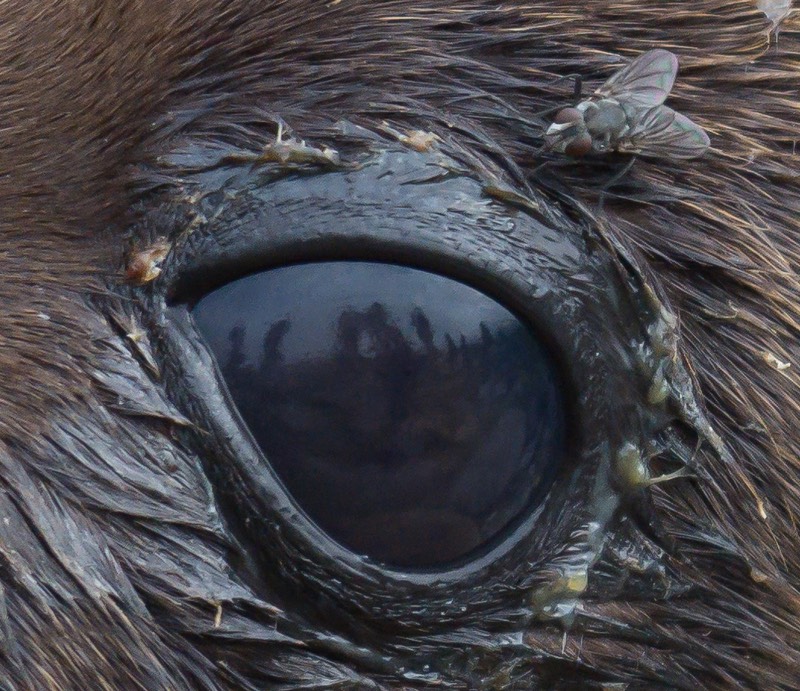
I’d say that’s sharp for 500mm, wouldn’t you? If you look carefully, you can see my reflection in the eye, too. (This is a D7200 at ISO 1600, by the way. Handheld, wide open.) Yes, there’s a tiny bit of edge corruption compared to my 500mm f/4, but gee, how many of thousands of dollars more is that lens?
I know some of you want to know about teleconverters. Ugh. As you may have gathered from my writings lately, I no longer use teleconverters. They’re just a bit too much of a dice roll, as they add a set of additional AF Fine Tune tolerances to deal with while taking away contrast and skewing the spherical aberrations at the edges. That said, I did put the latest Nikon 1.4x on the lens for a chart test. If you’re happy with f/11, then yes, it seems like a very usable combo, at least in the central area of the frame. But not wide open (which would be f/8 with the TC-14E). An aperture of f/11 puts us awful close to Sunny 16 at base ISO. Indeed, any shade (or worse) and any motion means that you’re pushing ISO rapidly up to get a proper exposure and shutter speed. Even in the mostly sunny Galapagos that would have proved to be a bit of a problem.
One bit of good news: the lens actually seems to perform well at infinity. As you probably know, the 200-400mm has a terrible bout of “long distance-itis.” I see no such thing with the 200-500mm. Indeed, I was incredibly surprised at how well it sometimes managed to do at very long distances.
You may remember this shot:
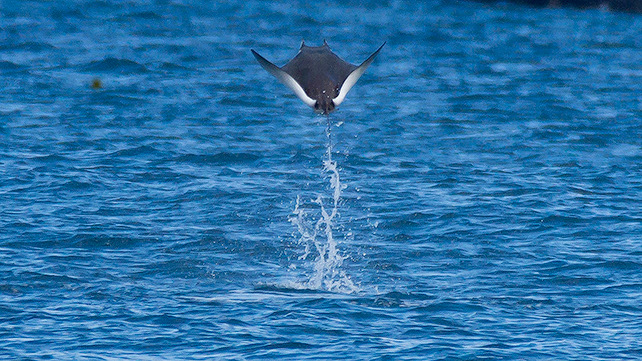
This is a crop from about two football fields away (lengthwise). I was actually surprised it turned out to be a usable image at all. But it still has snap despite the long distance involved. Something I’m not used to writing regarding telephoto Nikkors, actually.
Stabilization: The VR seems to work fine for handholding, though I really dislike the new “Normal” versus “Sport” choice. I want “Active” back, as that’s the most likely way I’d use VR (on active platforms, such as boats, planes, trains, and automobiles). I saw very little of the VR edge acuity fuzz at high shutter speeds I’ve seen with some Nikkors, and almost none of the background jitters you sometimes see in out of focus areas with VR. Curiously, I didn’t really notice the VR most of the time when it was on. It’s quiet and not particularly over ambitious in presentation of change as on some lenses.
However, using VR on a tripod seems suspect with this lens. I see clearly lower acuity with VR turned on and the lens mounted to a completely stable platform. If you’ve been following the advice on my All About VR page, you’d be turning VR off on a tripod, anyway. But let this serve as a reminder.
Other: Chromatic aberration (both kinds) was very well under control on my sample, though with the TC-14EIII it became pronounced. Likewise, linear distortion was minimal and easily removed. Flare was a bit more of a problem if the light source was directly in the frame or just at the edge or in any way hit the front element of the lens. Still, for a complex zoom, the flare patterns were simple and without additional coloration.
Bokeh has a bit of “onion" to it (concentric rings), and there’s clear coma as you move towards the corners. But in practice I was very pleased with the out of focus rendering on non specular highlights, where these problems simply won't be seen.
While the lens isn’t weatherproof I did almost nothing to protect it for two weeks in the Galapagos, and we had quite a few bouts of mist and drizzle (plus blowing sea spray). I set the lens down on sandy beaches, banged it against lava and the side of the yacht a few times, and I really only cleaned it once every other day or so. I saw no issues in this sort of use. Had it really rained hard I would have put the lens away or used it with protection, but my experience seems to show it’ll handle a fair amount of abuse and light weather with no problems.
Focal length breathing: yes, the 200-500mm exhibits this. At the closest focus distance the lens is somewhat less than 400mm. But this appears to be more variable than some lenses: you have to be at very near focus distances to see large focal length changes.
Overall, I was pleasantly surprised by the performance of the 200-500mm. Actually, very pleasantly surprised. In the performance categories there simply isn’t a wart to be found. I’d say that the optical performance is well above what you’d expect for the money. Well above.
Final Words
Here’s the thing: the 200-500mm is better optically in all respects from 200-400mm than the latest 80-400mm. It’s also US$900 cheaper. No brainer, right? Buy the 200-500mm.
I don’t think it’s quite that clear cut. The 80-400mm is a truly portable lens that’s easy to handhold and keep pointed at fast moving subjects, and easy to zoom in situations when the subject moves toward or away from you. It has excellent autofocus performance both because of that, and because the autofocus motor is moving less mass. The 200-500mm is a bit of a beast to handhold and you can easily get into situations where you lose a few images due to focus because of that. See the problem?
Yeah, I want both lenses. Indeed, I’ve tested these lenses exactly backwards, which is one of the reasons why I’ve noticed the nuance here. I used the 80-400mm in Africa, where I was more often in a stable platform and not trying to follow really fast motion as often, while I used the 200-500mm in the Galapagos, almost always handheld where subjects were often very close to me and in fast motion. Like this:
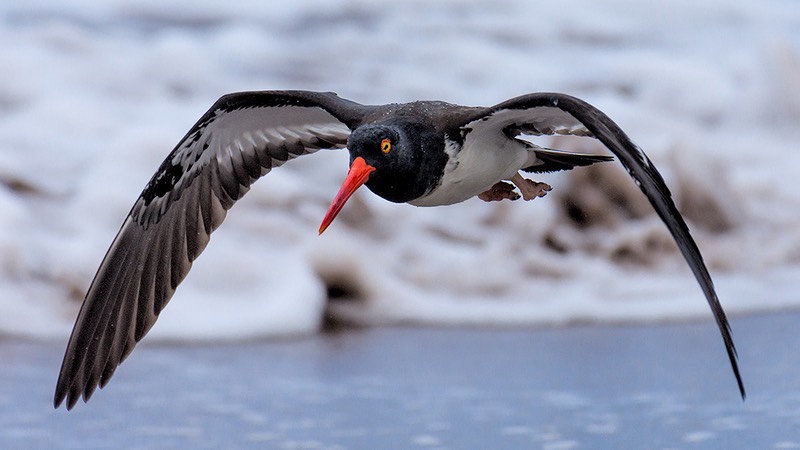
This use was almost exactly the opposite of optimal for these two lenses. The 80-400mm is a near perfect Galapagos hiking lens, the 200-500mm a much better Africa safari lens. That said, if pressed both can do duty in the opposite situation and not fail you.
Of course, not all of you can afford to have both. So the things you need to consider are these:
- How often do you need 80-200mm versus 400-500mm? Your subject matter is going to influence this.
- If you’re handholding, can you really hold seven pounds (camera plus lens) reliably for any length of time?
Okay, what about the competitors (which go to 600mm)? I haven’t had nearly as much experience with either the Tamron or Sigma as I have with the Nikkor, but one thing I clearly noted almost immediately was that the 200-500mm was sharper, especially as you moved out towards the corners. On my D7200 (DX body) the 200-500mm can be considered pretty darned sharp edge to edge. I can’t say that for the Tamron or Sigma I used, both of which were showing some clear issues in the DX corners and even seemed a bit less contrasty in the central area. Indeed, like many recent Nikkors, the 200-500mm just seems “well behaved.” It’s difficult to find an optical fault with it under actual use conditions: it just delivers sharp, contrasty, artifact free images most of the time. Vignetting isn’t bad at 500mm f/5.6, either.
Nikon’s created a real winner in the 200-500mm f/5.6 (not that the 80-400mm is a slouch). It’s really hard to find fault with it in any meaningful way other than size and weight, and how can you do that for a 500mm lens? ;~) The 200-500mm is big and going to need a reasonably big bag to transport, plus it’s heavy and that’s going to influence your shots a bit if you’re trying to handhold. But this lens is also very, very good optically and offered at a very affordable price. In fact, for Nikon, I’d have to say a bargain price, as they typically price high not low, and this lens delivers well beyond expectations for the price.
Bottom line: if you’re a telephoto shooter, you want to consider this lens. Indeed, I’d pick this lens over the 200-400mm f/4 right now, that’s how good it is. Okay, if you need f/4, you still need the 200-400mm. But seriously, I’m glad I sold my 200-400mm f/4 now: I’d be looking at myself in the mirror and complaining if I were to shoot with it against the 200-500mm f/5.6 at any distance over 25m.
One last thought: I used this lens mostly on my DX D7200 (also tested on my FX D810). That’s equivalent to the 750mm angle of view on FX. Frankly, if you need a tighter image area than a D7200 and 200-500mm provide you have some real problems: you’re simply not close to the subject, you’ll have atmospheric conditions that impact your results, and getting terrifically precise focus will get tougher the longer the focal length and distance. Then there’s keeping the seven pounds pointed perfectly steady at really distant objects ;~). DX plus this lens is a great safari combination, and I’d argue you should then just avoid TCs. Heck, even FX plus this lens is a pretty good safari combination and I’d still avoid TCs. Just saying ;~).
Highly Recommended (2015 to present)
Support this site by purchasing from this advertiser:
